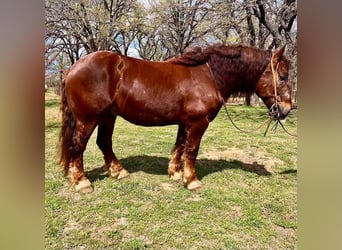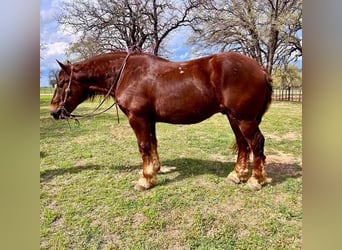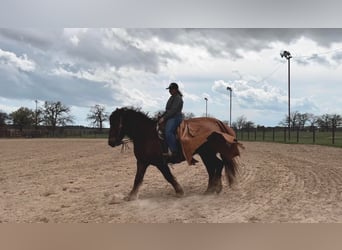US
Suffolk - horses for sale
Page-1-Ad
In addition, interested parties can directly see more information. This significantly increases the number of potential buyers.

US
The sturdy Suffolk Punch is believed to be the oldest breed of heavy horse in England. With their gleaming coats in various shades of chestnut, Suffolk Punches are an appealing sight to behold when working the land. They have a unique place among heritage breeds, and a dedicated trust exists to ensure their survival. Breeders who sell a Suffolk Punch are very conscious of the historical importance of these hard-working animals. People who buy a Suffolk Punch not only gain a trusty working horse but also join a world-wide fellowship of Suffolk enthusiasts.
Origin and history of breeding Suffolk Punches
The history of the Suffolk Punch, as the name suggests, is closely linked to the low-lying county of Suffolk in East Anglia. In fact, the breed is almost a textbook example of regional development, since its unique properties were created for the soil conditions of this region. A type of horse known by the name is believed to have existed as early as the sixteenth century. References to a regional type are known from the early 1600s. However, it was not until 1768 that the famous foundation sire came into the records, with the birth of the stallion known simply as Crisp’s Horse of Ufford. All living Suffolks trace their ancestry back to this horse through the male line. It's thanks to the work of the first secretary of the British Suffolk Horse Society, Herman Biddell, that the history of the Suffolk is well known. It took him two years from the foundation of the society in 1877 to create the first volume of the Stud Book. This provides not only a comprehensive record of Suffolk Punch ancestry but also important social records relating to the lives of the people of Suffolk.
Due to its regional popularity and usage, the Suffolk is often described as a very pure breed of horse. The farmers of the region bred a horse that was strong and compact with a low centre of gravity to work the heavy, sticky clay soil of East Anglia. It’s been suggested that this relatively isolated area meant that the horses were confined to the region and rarely if ever, sold beyond it. This was certainly true in the early days, but once farmers elsewhere realised its strength and usefulness, the reputation of the Suffolk began to spread. The other qualities the farmers looked for in their horses were an easy-going, willing temperament, excellent bones, longevity and strength. They bred an early maturing animal that was easy to keep and built to endure.
Suitability of Suffolk Punches as working horses
While the Suffolk Punch may never have achieved the sheer numbers worldwide of other draught horse breeds, such as the Clydesdale, Shire or Percheron, it is still very much admired. Its sterling qualities make it the choice of many experts in the world of working horses. It is still well represented at shows in its local region, such as the Woodbridge Show, which is the premier event for stallions. Suffolk enthusiasts can be found across the globe, with a particularly strong presence in North America. The clean legs of the Suffolk, along with their skill in negotiating rows of growing crops makes them popular as agricultural horses. They work successfully in the logging industry, too.
The influence of the Suffolk Punch
Suffolk Punches have contributed to many other draught horse breeds, including Jutland and Schleswig draught horses. All three may have a common ancestor dating back to Viking times! They are popular in Pakistan for their tolerance to heat.
Suffolk Horses are a remarkable breed of heavy draft horses that have been an integral part of English farming history for over 400 years. These horses were bred in the county of Suffolk, England, and are now an endangered species. These majestic animals are known for their strength, stamina, and gentle temperament. In this article, we will delve into the interior and exterior features of Suffolk Horses and explore their fascinating history.
The Character of Suffolk Horses
Suffolk Horses have a distinct personality that is admired by many horse enthusiasts. These horses are known for their calm demeanor and willingness to work hard. They have a gentle nature and are easy to handle, making them an ideal choice for novice riders. Suffolk Horses are also incredibly intelligent, and they are quick learners. They can be trained to perform various tasks, including plowing fields, pulling carts, and even performing in shows.
Suffolk Horses are extremely loyal animals and can form strong bonds with their owners. They are affectionate and enjoy being around people. These horses are also known for their patience, and they can tolerate long hours of work without getting tired or restless. This trait has made them a popular choice among farmers and breeders who require a reliable and hardworking horse.
Use and characteristics of the Suffolk Punch
The first thing anyone planning to buy a Suffolk Punch needs to know is that while their coat colours are invariably one of seven recognised shades of chestnut, it’s always written as “chesnut”! The most frequently seen coat colour is a rich red. The traditional shades extend from light mealy, lemon, bright, golden and red to dark liver and dull, dark chesnut. The next notable feature is the sturdy, compact shape of the Suffolk, which stands on relatively short legs that carry no feathers. Its stocky and easily identifiable outline gave the breed the name “punch”, which may derive from Mr Punch the famous puppet! Breeders who sell a Suffolk Punch will confirm that when it comes to working, they pack a punch too. Standing around 16.1 hands high (65 inches/163 cm) to 16.2 hands high (66 inches/168 cm), although stallions may be up to a hand taller, Suffolk Punches are an ideal size for a smallholding and easy to keep. Although smaller than Shires or Clydesdales, they do not weigh much less, at between 1904 lb (860 kg) and 2240 lb (1015 kg).
The Appearance of Suffolk Horses
Suffolk Horses are easily recognized by their striking appearance. They have a muscular build and stand between 16 and 17 hands high. These horses have a distinctive chestnut coat, which is sometimes referred to as "sorrel." The color of their coat can vary from light chestnut to dark brown, and they have a white blaze on their face. Suffolk Horses have large, expressive eyes, and their ears are always alert and attentive.
The most distinctive feature of Suffolk Horses is their size and strength. These horses have powerful legs and broad shoulders, which give them the ability to pull heavy loads. Their hooves are strong and sturdy, which allows them to work on rough terrain. Suffolk Horses have a majestic presence that is admired by many, and they are often used in parades and shows.
The History of Suffolk Horses
Suffolk Horses have a rich history that dates back to the sixteenth century. They were bred in Suffolk, England, as a response to the growing demand for powerful and reliable draft horses. Suffolk Horses were used to plow fields, transport goods, and pull carts, and they quickly became a valuable asset to farmers and merchants.
During the nineteenth century, Suffolk Horses reached the peak of their popularity. They were used extensively in agriculture and were even exported to other countries.










